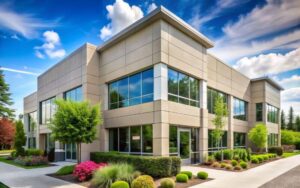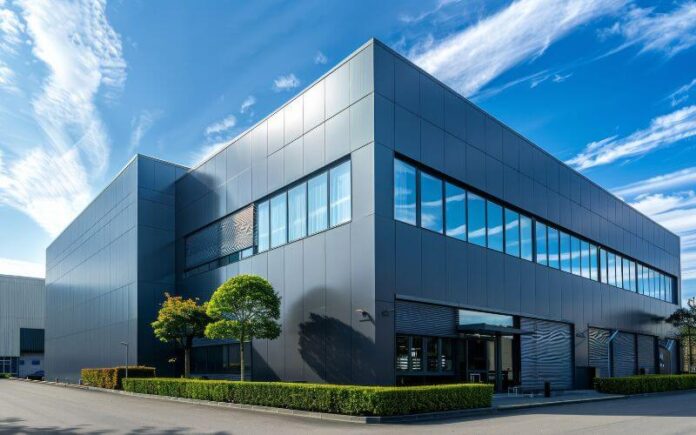A well-maintained commercial property is a valuable asset. Its exterior, particularly the siding, is crucial in shaping its overall appeal and market value. A visually appealing building can attract potential tenants, buyers, and customers, directly impacting its bottom line.
With that in mind, this article will explore the crucial role of commercial siding in enhancing property value, providing practical tips for material selection, and offering maintenance advice to ensure long-lasting appeal.
What Are Commercial Sidings?
Commercial sidings are exterior materials applied to the outside walls of commercial buildings to provide protection, insulation, and aesthetic appeal. This siding Madison WI, is crucial in maintaining the building’s integrity by shielding it from weather conditions, enhancing its energy efficiency, and contributing to its visual appeal.
Types of Commercial Siding Materials
There is a wide variety of commercial siding materials, each with unique benefits, making it possible to find the right fit for different climates, budgets, and building types:
- Metal Siding: Often made from steel or aluminum, metal siding is known for its durability, fire resistance, and modern look. It’s a popular choice for urban or industrial settings and requires minimal maintenance.
- Vinyl Siding: Affordable and versatile, vinyl siding is available in numerous colors and textures, allowing for design flexibility. It’s also resistant to rot and insect damage, making it a low-maintenance option for commercial buildings.
- Fiber Cement Siding: Made of cement, sand, and cellulose fibers, fiber cement siding is highly durable and can mimic the appearance of wood, stone, or brick. It’s also resistant to fire, moisture, and pests, making it a popular, long-lasting choice.
- Brick and Stone Veneers: Known for their upscale, timeless appeal, brick and stone veneers offer durability and fire resistance. While more costly, these materials provide a solid, sophisticated look and are excellent for buildings seeking a classic or premium aesthetic.
- Wood Siding: Though less common in commercial settings due to maintenance requirements, wood siding offers a natural, rustic look. With regular upkeep, wood can be a charming boutique or unique commercial space option.
- Stucco Siding: Often used in warmer climates, stucco is created from cement, sand, and lime. It offers excellent insulation, energy efficiency, and a textured appearance, making it ideal for both aesthetic appeal and practical insulation.
With so many options, choosing the suitable commercial siding material allows property owners to balance durability, maintenance, cost, and aesthetic appeal to best suit their building’s needs.

Benefits of Commercial Sidings
Commercial sidings offer many advantages that go beyond simply enhancing a building’s appearance. Here’s a look at the key benefits of commercial sidings and why they matter for building owners and tenants alike.
1. Enhanced Curb Appeal
Curb appeal is one of the most powerful factors influencing a commercial property’s perception and value. Siding contributes directly to the building’s visual impact, giving potential clients, tenants, or buyers an immediate sense of the property’s quality.
High-quality, attractive siding can distinguish a modern, inviting, well-maintained building from one that needs updating or addressing. The siding’s materials, colors, and design contribute to a cohesive, appealing exterior that aligns with current trends and client expectations, making the property stand out in the market.
2. Improved Energy Efficiency
Nowadays, energy efficiency is more than just a nice-to-have feature—an expectation. Modern siding options often include built-in insulation or are compatible with additional insulation layers that drastically improve the building’s thermal regulation. By helping to keep interiors warmer in winter and cooler in summer, energy-efficient siding reduces the workload on HVAC systems, leading to lower energy bills.
Additionally, energy-efficient buildings are often eligible for green certifications, which can further enhance the property’s appeal and perceived value by signaling a commitment to environmental responsibility and sustainability.
3. Increased Durability and Protection
The primary purpose of siding is to protect the building from external elements like harsh weather, wind, rain, and UV radiation. High-quality siding materials are designed to withstand these elements, reducing the risk of moisture damage, mold growth, and structural decay.
When a property is safeguarded from these potential issues, it requires fewer costly repairs over time, making it a lower-risk investment for potential buyers. Durable siding also contributes to the building’s structural integrity, ensuring the property remains solid and safe for tenants and visitors.
4. Reduced Maintenance Costs
Low-maintenance siding materials like fiber cement, vinyl, or metal have become increasingly popular due to their resilience and minimal upkeep requirements. For commercial properties, where maintenance costs can quickly add up, having siding that resists dirt, fading, and wear significantly reduces operational expenses.
Unlike traditional wood or poorly installed siding that may require regular painting, repairs, or replacements, low-maintenance siding only needs occasional cleaning to retain its fresh look. This ease of care attracts potential investors or buyers who prefer properties with lower operating costs and less hassle.
5. Increased Longevity of the Building
Quality siding extends a building’s life by providing continuous protection against the elements. It is a protective shield that mitigates the impact of temperature fluctuations, moisture, and sunlight on the building’s core structure.
Over time, this protective barrier prevents wear and tear that could lead to costly renovations or structural damage. This increased longevity is crucial in commercial real estate, where long-term viability can significantly affect property value.
By investing in high-quality siding, property owners ensure that their buildings maintain their integrity and functionality for years longer than buildings with subpar or outdated exteriors.
Conclusion
Commercial siding does much more than improve appearance; it directly contributes to a property’s durability, energy efficiency, ease of maintenance, and overall lifespan. Each benefit adds to the property’s value, making quality siding an essential investment for commercial property owners looking to maximize their asset’s worth.
